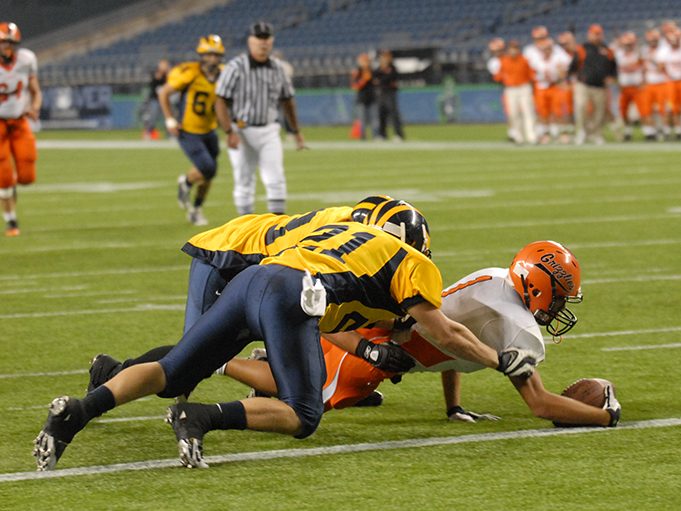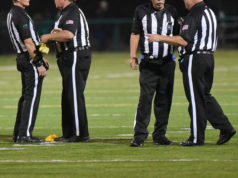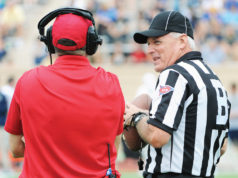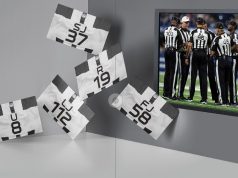A few seasons ago, a game was stopped six times for instant play reviews. Four stops led to reversals of the onfield call. Two of the reversals involved a concept I call “double action.”
In each instance, the calling official ruled that, as the runner was being tackled near the goalline, he got the ball over the goalline plane for a touchdown before a body part other than a hand or foot hit the ground. As we know, a runner is not down because a hand or foot touches the ground, and by interpretation, the wrist, ankle and back of the hand are all part of the “hand or foot.”
In looking at different replay angles, however, one could see that in both instances, the runner’s entire leg was on the ground before the ball broke the goalline plane. At the precise instant it appeared the leg was on the ground, the arm in which the ball was being carried was virtually perpendicular to the ground, so the ball should have been declared dead at that point. But in each case the arm continued forward so that it appeared to the calling official that the ball had broken the goalline plane for a score. That act of the arm falling forward after the ball should have been declared dead is, in effect, a second act that has acquired the label “double action.”
I would venture to say that in the course of most football games, especially at sub-college levels where the officials are not as seasoned, double action accounts for a sizeable number of erroneous spots. That is likely because many officials are not aware of the concept. I doubt it is part of the training program in many groups. Indeed, I cannot recall a single instance in which the double-action concept was even mentioned, nor have I heard it discussed in most officials’ meetings I’ve attended in recent years.
Double action can happen so fast that even seasoned officials can be led astray, as the two examples noted illustrate. In the first instance, the ball was re-spotted at the one foot line and in the second it was put at the one yardline. That meant the onfield officials made quite a big error, when you think about it. In their defense, both plays were long gainers in which the deep officials had to scramble to get to the goalline. But if seasoned officials in an eight-official crew can miss the play twice in the same game, imagine how many times double action accounts for erroneous spots in games worked by fewer officials.
And the problem doesn’t just occur on scoring plays. More than once replay officials reversed an onfield ruling that a runner made the line to gain when in reality the runner fell forward after he should have been declared down.
College and pro officials, especially head linesmen and line judges, train themselves to focus on arm action as a runner is going to the ground. By concentrating as hard as they do, they get the vast bulk of those calls correct. I even know of officials who have studied game video solely to focus on what a runner’s arm was doing when he was being tackled. Their attitude was that the more plays like that they see, the more likely they are to get them right on the field. But even then, mistakes are made.
Sub-college officials need to put the double action concept in their repertoire as well. I think it ought to be a focal point of association training programs. Just one missed call can affect the outcome of the game. If officials have a good view of the action and devote 100 percent laser-like focus on where the ball is at the exact moment a body part other than the hand or foot hits the ground, they will get most of those calls correct. But it takes that degree of focus on every single play to do so.
Officials’ training programs spend a lot of time on rules, mechanics and philosophy — and rightfully so. But they also need to stress the need to spot balls at the exact place they are the moment a runner is down by rule and not to give the offense an unfair advantage by allowing double action to net yardage that it didn’t earn. Indeed, double action has the potential to be as much, if not more, of a game-changer than anything else the officials do on the field in the course of a game.
What's Your Call? Leave a Comment:
Note: This article is archival in nature. Rules, interpretations, mechanics, philosophies and other information may or may not be correct for the current year.
This article is the copyright of ©Referee Enterprises, Inc., and may not be republished in whole or in part online, in print or in any capacity without expressed written permission from Referee. The article is made available for educational use by individuals.


















